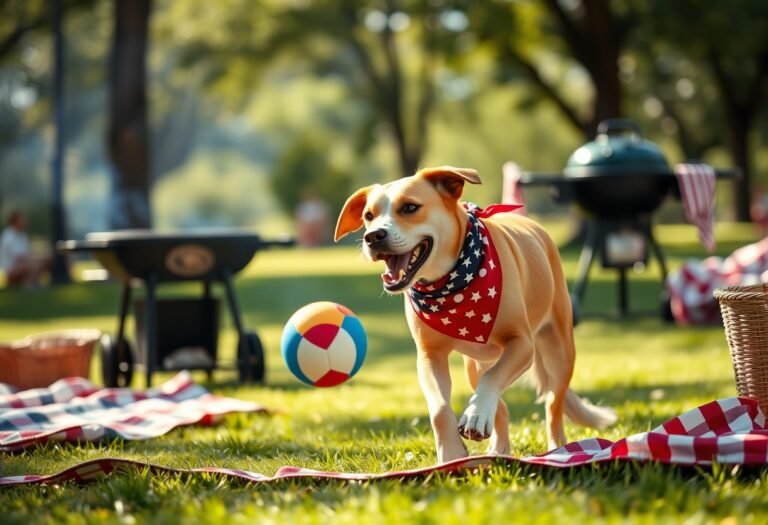Sleeping outdoors with your furry companion can be a delightful experience, but choosing the right gear is important for both comfort and safety. As you explore options like dog sleeping bags and pup tents, it’s important to understand which one suits your adventure needs best. In this post, you’ll discover the features, benefits, and considerations of each option, ensuring your pet enjoys their outdoor escapades to the fullest. Let’s examine the best choices for your canine companion’s outdoor slumber.
Tailoring Comfort: The Anatomy of Dog Sleeping Bags
The anatomy of dog sleeping bags centers around creating a cozy environment for your pup, optimizing for warmth and security. Features like adjustable closures, padded compartments, and areas for added insulation contribute to a restful sleep experience. The shape of the sleeping bag can vary from simple rectangular designs to more contoured shapes that fit snugly around your dog, making it crucial to select one that meets your pet’s needs and preferences for the best night’s rest.
Insulation and Material Choices
Selecting the right insulation and materials for your dog’s sleeping bag influences their comfort level significantly. Many dog sleeping bags utilize synthetic fills like polyester, which offer excellent warmth without excessive weight. Additionally, waterproof or water-resistant fabrics can keep your pup dry, while breathable materials promote air circulation. Some brands may even integrate eco-friendly options, allowing you to choose a product that’s both comfortable and sustainable.
Design Features for Various Breeds
Design features tailored for different dog breeds enhance the overall comfort and functionality of sleeping bags. For example, small breeds benefit from ultra-compact sleeping bags that cocoon them in warmth, while larger breeds require more spacious options that prevent cramping during sleep. Additionally, sleeping bags designed for specific types (such as hunting or sporting dogs) often include added features like built-in pockets for securing treats or toys.
Considering your dog’s characteristics, such as size, coat type, and sleeping style, is key to finding the right design. For instance, a sleeping bag with extra padding may cater well to older dogs with joint issues, while a lightweight, travel-friendly option would suit adventurous breeds. Also, specialized designs may feature bolsters or flaps that provide additional security and comfort, mimicking a nest-like environment that many dogs naturally prefer.
The Great Outdoors: Evaluating Pup Tents
Pup tents serve as portable shelters that provide a dedicated space for your dog in outdoor settings. When deciding on the right tent, consider factors such as weather resistance, ease of set-up, and size to ensure your dog remains comfortable and protected during your adventures. Making the right choice not only enhances your pet’s experience but also adds convenience for you, paving the way for enjoyable outings together.
Weather Resistance and Durability
A quality pup tent should withstand various weather conditions, from unexpected rain to intense sunlight. Look for tents made from durable, water-resistant materials such as ripstop nylon or polyester with waterproof coatings. UV protection is also imperative to prevent damage from prolonged sun exposure. Brands like Ruffwear and Kurgo offer models specifically designed for durability, making them smart choices for adventurous pups.
Size and Set-Up Ease for Traveling
Choosing a pup tent that offers a balance between size and ease of setup enhances your traveling experience. Look for options that are lightweight, compact, and easily packable—ideally, they should fit comfortably in your vehicle without taking up too much space. Many modern pup tents feature straightforward pop-up designs or quick-assembly mechanisms, allowing you to set them up within minutes. This convenience means you can spend less time on logistics and more time enjoying the outdoors with your pet.
Spending time outdoors often means taking your gear on the go, so look for pup tents that prioritize travel efficiency. Lightweight options typically weigh under 3 pounds, making them easy to carry on long hikes. Additionally, consider tents that fold down to a small size and come with carry bags. Some models even include color-coded poles for effortless assembly, so you can pitch your tent after a long day of exploring without the hassle of complicated instructions. This way, setting up a cozy spot for your dog can be a breeze, allowing you both to relish your outdoor adventures with ease.
Packability Matters: Comparing Portability
| Model | Weight & Compactness |
|---|---|
| Dog Sleeping Bag A | 2 lbs, packs down to the size of a water bottle |
| Pup Tent A | 3 lbs, compact foldable design, fits in a small backpack |
| Dog Sleeping Bag B | 1.5 lbs, compresses to a compact pouch |
| Pup Tent B | 4 lbs, requires a larger space for packing |
Weight and Compactness in Different Models
Your choice of pet gear should reflect your travel style. Dog Sleeping Bag A weighs just 2 lbs and compresses to the size of a water bottle—ideal for minimalists. In contrast, Pup Tent A is a bit heavier at 3 lbs but its foldability ensures it fits into a small backpack easily. For ultra-light packing, Dog Sleeping Bag B stands out at 1.5 lbs, while Pup Tent B’s 4 lbs might require sacrificing some packability.
User Reviews: Real-World Experiences
User reviews shed light on how these products perform in everyday situations. Pet owners consistently share their experiences regarding how easy or cumbersome it is to pack and unpack their dog’s gear for trips. Many appreciate the lightweight options, noting that even a few extra ounces can feel burdensome during hikes or long travels. Others highlight the importance of a design that allows for quick folding and storage.
Feedback from dog owners reflects the practicalities of utilizing these products. For instance, one reviewer mentioned how Dog Sleeping Bag A fit seamlessly into their outdoor adventures, frequently taking fewer than 10 seconds to pack up. On the other hand, users of Pup Tent B pointed out that while the extra weight was noticeable, the spaciousness offered outweighed the portability concerns for longer camping journeys. Balancing weight and function proves crucial as you assess which option suits your dog’s travel needs best.
Cost vs. Quality: Making Smart Investments
Balancing cost and quality is imperative in ensuring you choose the right gear for your dog. While budget options may save you money upfront, they can often compromise on durability and comfort, leading to additional expenses in the long run. Investing in high-quality camping gear may come with a higher price tag, but it typically provides better performance, longevity, and satisfaction for both you and your pup, making it a smarter choice overall.
Budget-Friendly vs. High-End Options
Budget-friendly options can be enticing, especially for occasional campers. You’ll find sleeping bags and tents priced lower, but they often sacrifice materials or features. High-end products, while pricier, often feature superior waterproofing, insulation, and ease-of-use, enhancing your outdoor experience. Ultimately, analyzing your needs and camping frequency can help you determine if it’s worth splurging on higher-quality gear.
Long-Term Value of Dog Camping Gear
Investing in good dog camping gear pays off in the long run, significantly impacting your camping experiences. High-quality products are designed to withstand wear and tear, provide better insulation, and ensure a comfortable experience for your dog. Opting for durable gear can prevent replacements each season, minimizing waste and cost over time. With a well-made tent or sleeping bag, your pup can enjoy countless adventures, making the initial investment worthwhile as you create long-lasting memories together.
Consider a premium dog sleeping bag, like those made from high-performance materials, which can last several years compared to cheaper alternatives that may fray or leak after just one or two trips. This not only saves you money but also contributes to your furry friend’s comfort and safety. Additionally, many high-end options come with warranties or guarantees, providing peace of mind that you won’t end up discouraging your dog’s outdoor spirit with poor gear choices.
The Safety Factor: Ensuring a Secure Sleeping Environment
Creating a secure sleeping environment for your dog involves understanding both their behavior and the specific threats posed by the outdoor setting. Dogs may react differently to unfamiliar sounds or movements, making it important to select gear that provides a sense of safety. Predators, insects, and inclement weather are common challenges in nature, so consider these factors when choosing sleeping solutions. Your dog’s comfort partially hinges on their perception of safety, which you can enhance with the right equipment.
Dog Behavior and Environmental Considerations
Understanding your dog’s temperament and behavior is fundamental when selecting sleeping gear. Some dogs are naturally anxious or skittish, meaning they may need more enclosed spaces to feel secure. Additionally, recognizing how your dog reacts to environmental factors, such as wind, rain, or unfamiliar noises, can significantly influence their choice of sleeping arrangements. For urban dogs unused to the wilderness, a well-structured pup tent might work better than a simple sleeping bag.
Recommended Safety Features in Gear
Opt for sleeping gear that includes safety features like reflective materials, built-in anchor points, and waterproof fabric. These elements not only enhance visibility in low-light situations but also provide extra durability against the elements. An insulated base can keep your dog warm from the ground, while mesh panels increase airflow, reducing the risk of overheating. Consider how well these features integrate with your dog’s unique needs. For example, if your dog likes to burrow, look for bags or tents with adjustable hoods for added security.
Common safety features to look for in sleeping gear include non-slip bottoms to prevent sliding on various surfaces, secured openings to keep your dog from escaping unexpectedly, and lightweight materials that are easy to pack and carry. A gear option with weather-resistant properties, like a waterproof sleeping bag or tent, protects against sudden downpours or dewy grass. Additionally, consider items with integrated bug netting to minimize exposure to insects. Each of these features plays a role in creating a secure, snug environment for your pup, so carefully evaluate the options before you make your choice.
Final Words
Presently, when deciding between dog sleeping bags and pup tents, it’s imperative to consider your dog’s comfort, the environment you’ll be in, and the duration of your outings. A sleeping bag may provide warmth and coziness in colder conditions, while a tent can offer better protection from weather elements and space for your pet. Ultimately, your choice should reflect your dog’s needs and your adventures together, ensuring both safety and enjoyment.





